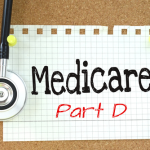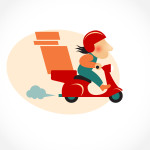Bipolar Disorder and Its Treatments
According to the National Alliance on Mental Illness, bipolar disorder affects approximately 10 million people across the United States.
The condition can disrupt a patient’s life by causing shifts in energy, mood, and activity levels. This makes daily tasks a lot more difficult. However, proper treatment and support can help people lead a fulfilling life.
If you or a loved one needs help in filling in prescriptions for treatments, consider enrolling in a prescription assistance program.
Here’s everything to know about bipolar disorder and treatments.
What Should You Know About Bipolar Disorder?
People with bipolar disorder experience alternating episodes of low and high moods. The condition causes unusual and significant changes to their mood, energy, concentration, and ability to perform daily tasks.
Bipolar disorder can cause more intense mood changes. These intense emotional states usually occur during distinct episodes along with other symptoms. For example, many patients report experiencing psychosis symptoms, like hallucinations, paranoia, and delusions.
Types Of Bipolar Disorders
There are three types of bipolar disorder. They are categorized by symptoms of mood changes, such as:
- Manic/hypomanicmood
- Depressive mood
Below are the three types of bipolar disorders.
Bipolar I Type
This type is defined by severe manic episodes lasting up to a week. People experiencing these symptoms might require urgent hospital care. Depressive episodes are also common and typically last two weeks. Patients can also experience mixed symptoms of depressive and manic episodes. These can be accompanied by symptoms of psychosis.
Bipolar II Type
Patients with this disorder can have depressive and hypomanic episodes, but not manic episodes. Hypomania symptoms and duration are a lot milder when compared to mania. Patients can still experience symptoms of psychosis, but only during depressive episodes.
Cyclothymia Type
This disorder causes fluctuating moods that are less severe. People with this condition can experience hypomanic and depressive symptoms lasting for a couple of years. In children and adolescents, the time period is a year. However, the symptoms don’t meet the requirements for a hypomanic or depressive diagnosis.
Treatments for Bipolar Disorder
Your medical provider will suggest treatments that stabilize your mood while lessening the severity of the symptoms. These treatments would be a mixture of:
- Counseling
- Medication
- Lifestyle changes
Medical Treatments for Bipolar Disorder
Your medical provider will prescribe drugs to help manage symptoms and stabilize mood shifts. It’s why your doctor may typically prescribe:
- Anticonvulsants for mania
- Antidepressants for depression
- Mood stabilizers, like lithium
- SGAs, second-generation antipsychotics

It’s vital that you don’t forget to tell your doctor about any other medications you’re using and follow their instructions completely.
A prescription drug assistance program can help make prescriptions affordable. Our services at Advocate My Meds can help you out.
Advocate My Meds is a prescription assistance organization striving to provide simple full-service prescription assistance programs to underinsured and uninsured Americans. By enrolling in our program, you can access 1, 500 FDA-approved branded and generic drugs.
Contact us today for more information, or click here to check your eligibility.







